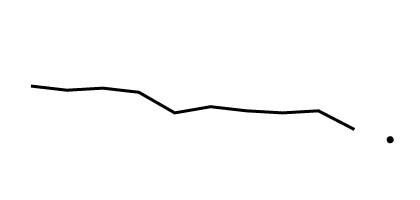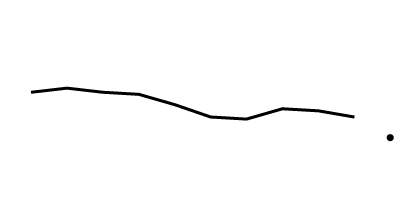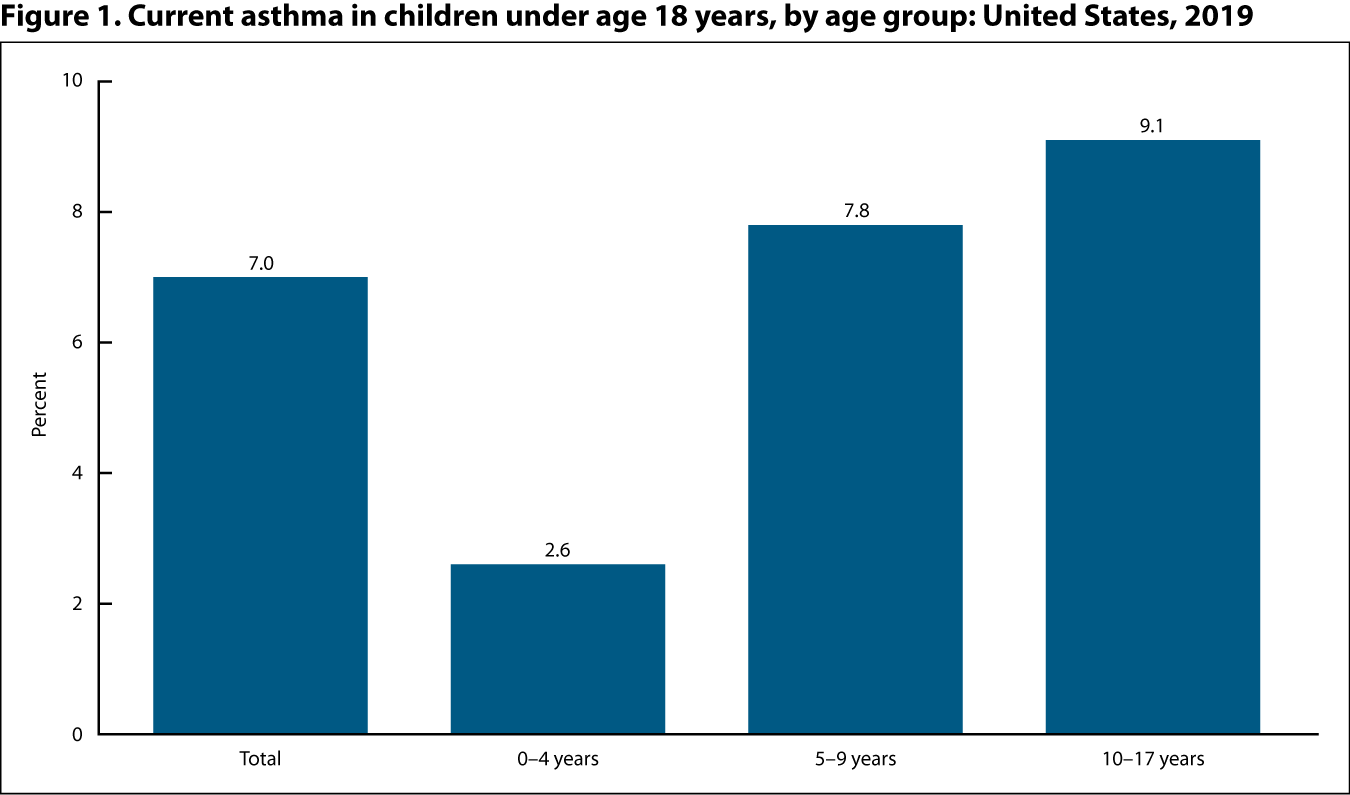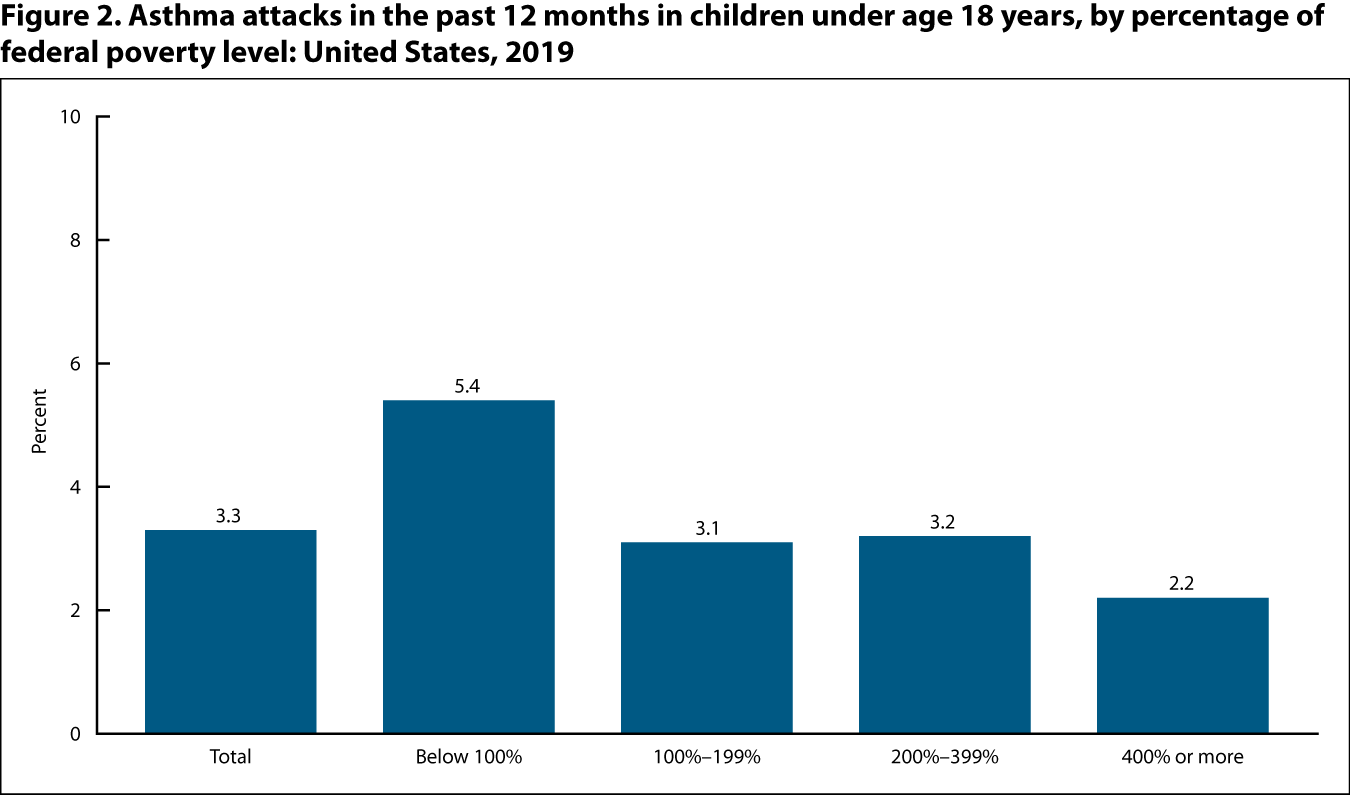Asthma
The content on this page was last updated in June 2023. More recent estimates and visualizations may be available from the NCHS Data Query System
Asthma is a chronic lung disease that causes episodes of wheezing, coughing, chest tightness, and shortness of breath (1). Asthma attacks can often be controlled by reducing exposure to environmental triggers and with prescription control medications (1). Uncontrolled asthma can result in hospitalization, missed work and school days, reduced productivity, and in rare cases, death (2,3).
Key Findings
Current asthma

The percentage of children under age 18 years who had current asthma decreased from 9.6% in 2009 to 7.5% in 2018. In 2019, 7.0% of children under age 18 years had current asthma. See Featured Charts for additional analysis and Notes for more information about analyzing trends using NHIS data.
SOURCE: National Center for Health Statistics, National Health Interview Survey. See Sources and Definitions, National Health Interview Survey (NHIS) and Health, United States, 2020–2021 Table AsthCh.
Asthma attack in the past 12 months

The percentage of children under age 18 years who had an asthma attack in the past 12 months decreased from 5.5% in 2009 to 4.3% in 2018. In 2019, 3.3% of children under age 18 years had an asthma attack in the past 12 months. See Featured Charts for additional analysis and Notes for more information about analyzing trends using NHIS data.
SOURCE: National Center for Health Statistics, National Health Interview Survey. See Sources and Definitions, National Health Interview Survey (NHIS) and Health, United States, 2020–2021 Table AsthCh.
The prevalence of current asthma is lowest in children aged 0–4 years.

SOURCE: National Center for Health Statistics, National Health Interview Survey. See Sources and Definitions, National Health Interview Survey (NHIS) and Health, United States, 2020–2021 Table AsthCh.
- In 2019, 7.0% of children under age 18 years had current asthma.
- The percentage of current asthma was higher in children aged 10–17 years (9.1%) and children aged 5–9 years (7.8%) than in children aged 0–4 years (2.6%).
In 2019, the percentage of children who had an asthma attack in the past 12 months was highest among those living below 100% of the federal poverty level (FPL).

SOURCE: National Center for Health Statistics, National Health Interview Survey. See Sources and Definitions, National Health Interview Survey (NHIS) and Health, United States, 2020–2021 Table AsthCh.
- In 2019, 3.3% of children under age 18 years had an asthma attack in the past 12 months.
- Children living below 100% of FPL were most likely to have had an asthma attack in the past 12 months (5.4%), compared with those living at 100%–199% of FPL (3.1%), 200%–399% of FPL (3.2%), and 400% or more of FPL (2.2%).
- Asthma attack: Based on a parent or knowledgeable adult responding to questions about whether they had ever been told by a doctor or other health professional that the child had asthma and whether the child had an asthma attack in the past 12 months. See Sources and Definitions, Asthma.
- Current asthma: Based on a parent or knowledgeable adult responding to questions about whether they had ever been told by a doctor or other health professional that the child had asthma and whether the child still had asthma. See Sources and Definitions, Asthma.
- Poverty level: Based on family income, size, and composition using U.S. Census Bureau poverty thresholds. Missing family income data are imputed. See Sources and Definitions, Family income; Poverty.
- National Heart, Lung, and Blood Institute. Expert panel report 3: Guidelines for the diagnosis and management of asthma. NIH pub no 07–4051. Bethesda, MD: National Institutes of Health. 2007.
- Nurmagambetov T, Kuwahara R, Garbe P. The economic burden of asthma in the United States, 2008–2013. Ann Am Thorac Soc 15(3):348–56. 2018.
- Zahran HS, Bailey CM, Damon SA, Garbe PL, Breysse PN. Vital signs: Asthma in children—United States, 2001–2016. MMWR Morb Mortal Wkly Rep 67(5):149–55. 2018.
